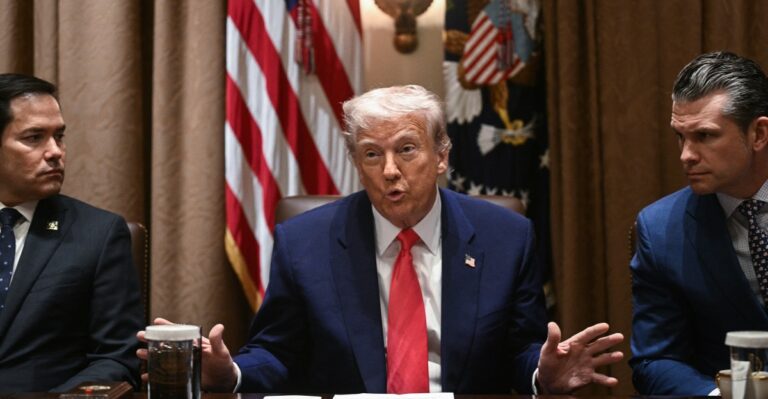President Donald Trump’s tariff plan has rattled Wall Street, alarmed the United States’ trading partners, and made Americans afraid of checking their retirement accounts.
It’s also been extremely confusing: After announcing that he would implement steep tariffs across the board (for reasons that didn’t make much sense), Trump walked back some of the tariffs before they were set to go into effect. However, he is still waging a trade war with China, and the tariff rates on many other countries remain much higher than they were before this whole saga began.
Throughout this, Trump and his allies have suggested that while the tariffs are hurting Wall Street, they’re going to have a positive effect for small businesses on “Main Street.” The logic is that it’s only the wealthy who own stocks and have 401(k)s, and are therefore feeling the pain of the plunging market.
But that’s not true, and it’s not just Wall Street that will suffer from these tariffs. That’s not because tariffs are always bad. As I wrote last week, tariffs can be used for good if implemented narrowly and strategically to help prop up certain industries, which is why some unions support the idea of harsher tariffs. But Trump’s plan is far too broad, and it’s unclear what he even hopes to achieve with them.
In reality, the people who will be most affected by Trump’s tariffs are poor people. That’s true for low-wage workers who might lose jobs in developing countries around the world as factories downsize or close because of the negative effect of tariffs on trade. It’s also true for low-income families in the United States, for at least two reasons.
How Trump’s tariffs will hurt low-income Americans
There are two ways the tariffs will hurt people with low incomes:
According to the Budget Lab at Yale University, which analyzed the impact of the original tariffs Trump announced over a week ago, the average American household would be levied about $3,800. For the lowest income households, the tariff-imposed cost-of-living increase is lower — about $1,700 — in part because their overall spending is lower.
But they will still pay a larger share of their income toward the price hikes. The bottom 10 percent of households by income, for example, would spend 4 percent of their disposable income on tariffs, while the top 10 percent will only pay 1.6 percent. (If Trump fully reverses some of his tariffs, the impact will be smaller but the overall trend will be the same: Lower-income people will carry the biggest burden.)
When Trump put a pause on implementing some of his tariffs, Goldman Sachs pulled back its recession forecast. But given the high tariffs still in place — and the instability of global financial markets — a recession is still on the table.
And if a recession does materialize, then low-income families will bear the brunt of it. During recessions, the number of people in poverty rises; between 2007 and 2009, during the Great Recession, the number of people living below the poverty line increased by nearly 5 million. The job market can also be a greater challenge for low-income people. Not only can job loss sometimes lead to long-term unemployment, workers without college degrees — who tend to earn less than college-educated workers to begin with — are more likely to find new jobs that have lower wages than before.
The good news is that all of this is reversible. The bad news is that it largely relies on Trump changing his mind, though as we saw this week, that’s always a possibility.
There are two other avenues for change.
The first is Congress: Before Trump walked back his “Liberation Day” promises, at least seven Republican senators signed onto a bipartisan bill to put limits on the president’s authority to impose tariffs. That’s unlikely to work, in part because the bill still falls short of the 60 votes it would need to pass the Senate, and because Trump’s abrupt U-turn has softened some of the pushback that his original tariff plan received.
The second is the courts: Federal courts could potentially strike down Trump’s tariffs, which are unpopular even in some right-wing circles. A libertarian group, for example, has already filed a lawsuit against Trump, claiming that he is misusing his emergency powers.
But the quickest and likeliest change can only come from Trump himself, and it’s hard to predict what he’ll do next. In the meantime, his latest tariff policy shows exactly where Trump’s priorities are: tax hikes for the poor, and tax cuts for the rich.
This story was featured in the Within Our Means newsletter. Sign up here.


